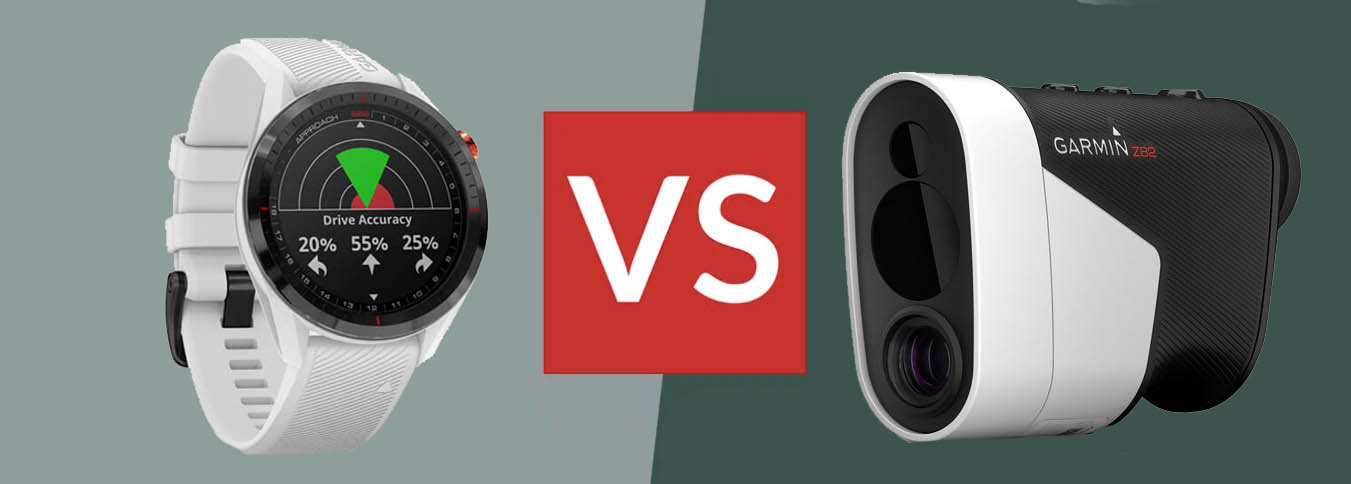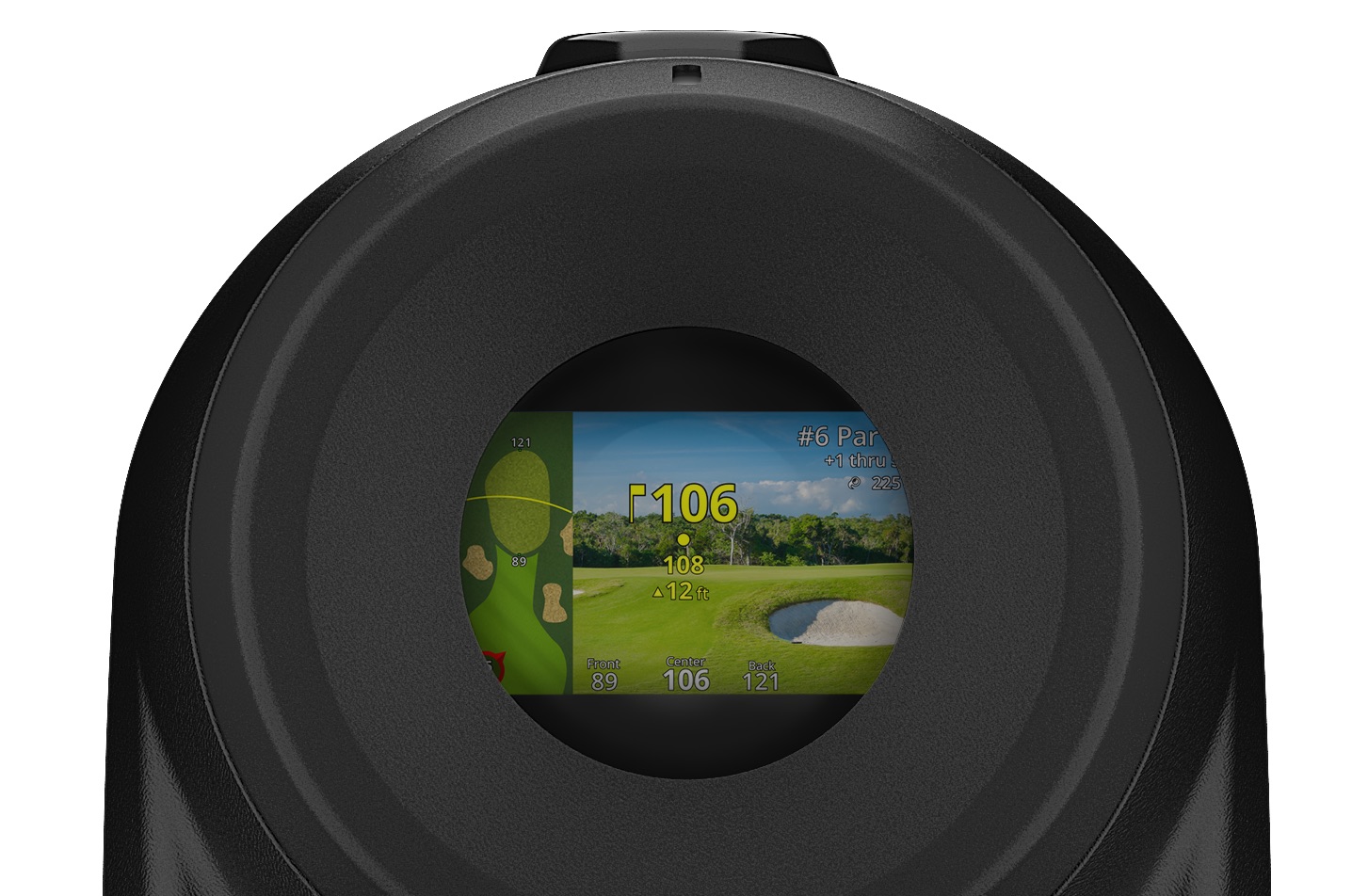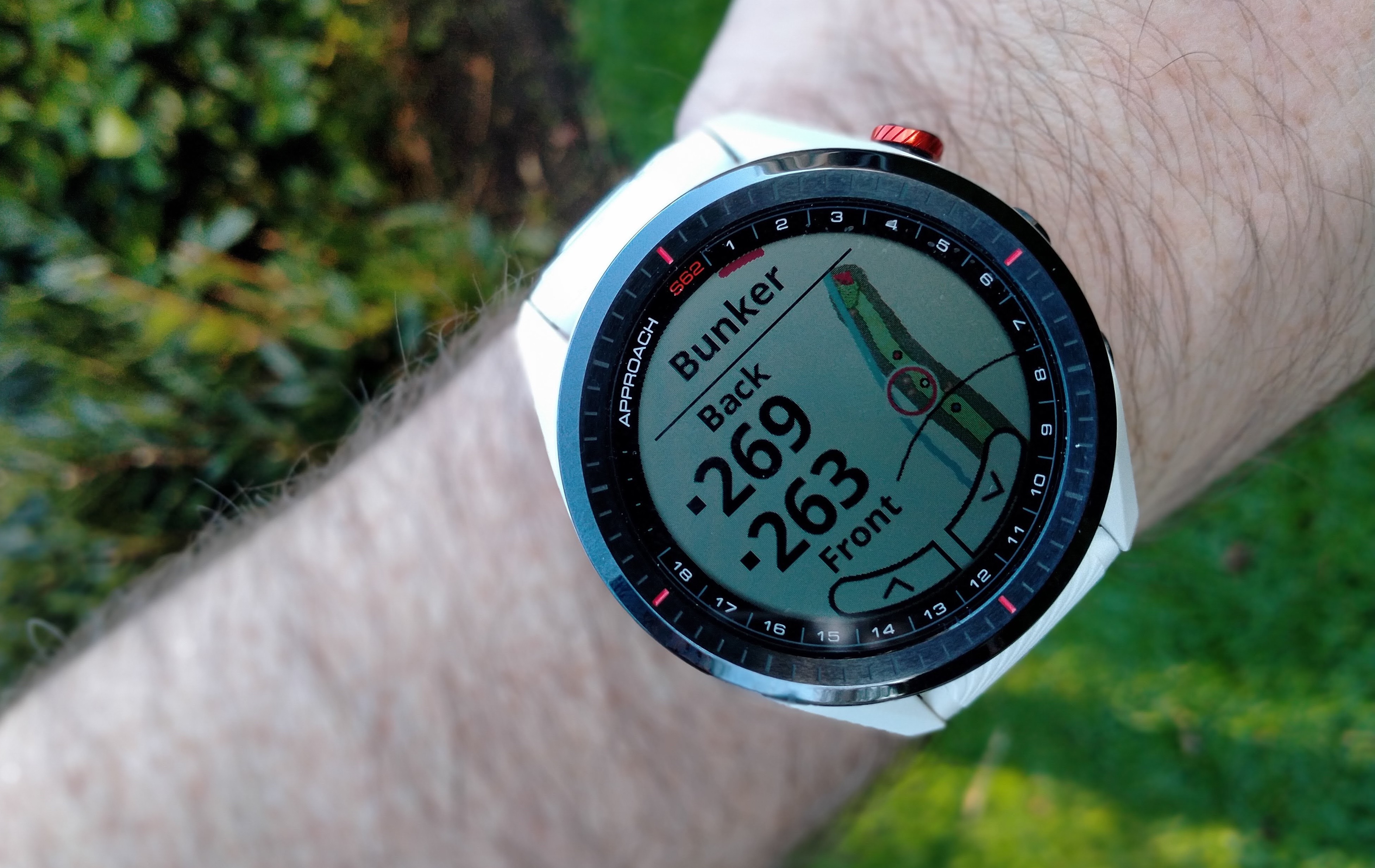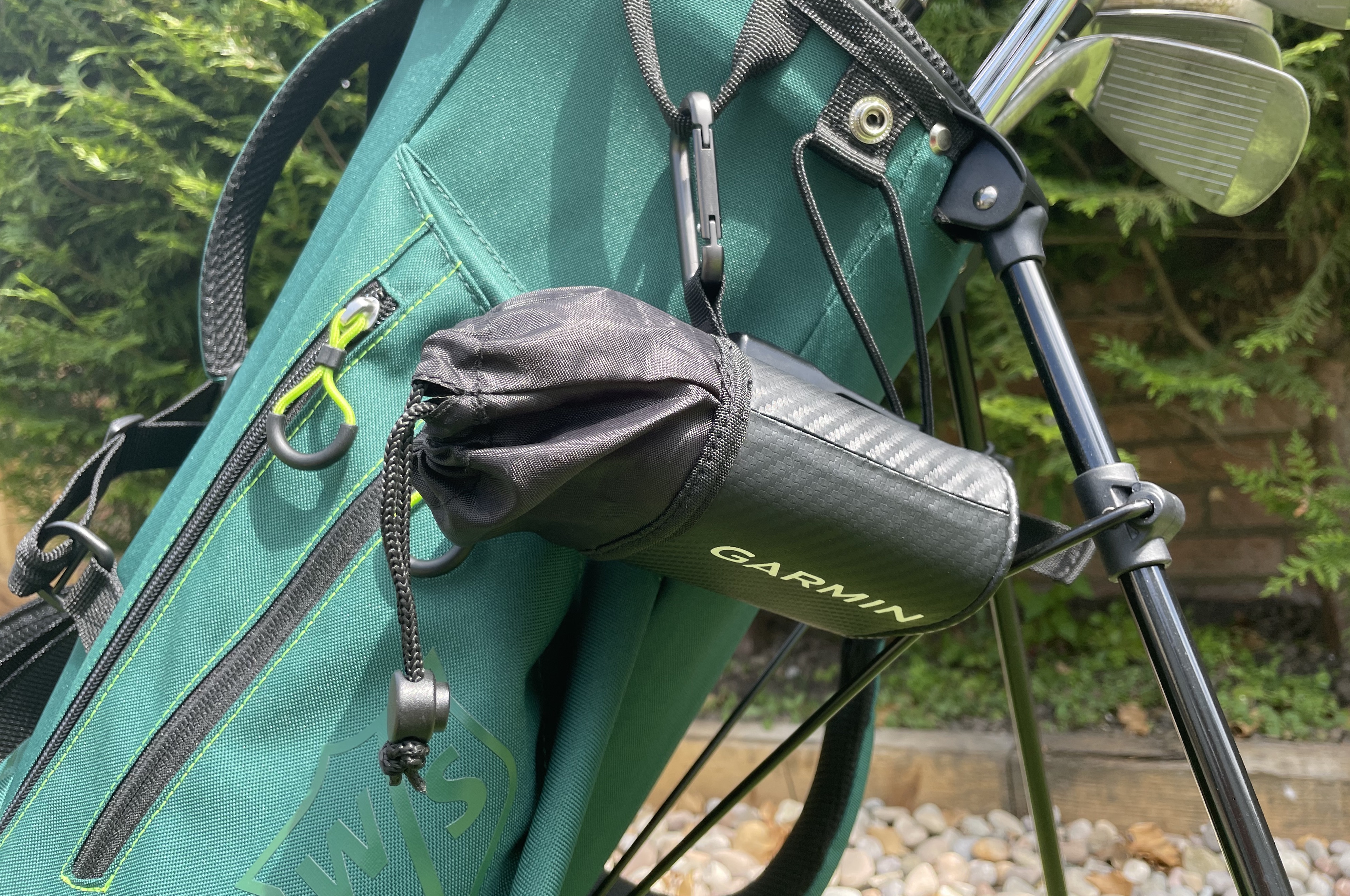Garmin Approach S62 GPS Golf Watch vs Garmin Approach Z82 GPS Rangefinder
GPS Golf Watch or Rangefinder? Garmin have you covered either way, but which one is best for you?


GPS watch or laser rangefinder? It’s a question every golfer has - or will - ask themselves at some point. Garmin are among the market leaders in both categories with the fantastic Approach S62 watch and the groundbreaking Approach Z82 rangefinder.
Both do the same job, kind of, it’s just that they do it differently. So which one should you buy? That depends on exactly what you are looking for, but read on and I'll endeavour to help you make up your mind.
• Direct to consumer golf balls

Over the course of this year I’ve tested and reviewed numerous GPS watches and laser rangefinders and the biggest take away I have is that the higher up the price scale you go, the less difference there is in what they do.
While there is a considerable difference between a cheaper watch and your typical bog standard laser, when it comes to the more expensive models they often share many of the same features. The only significant difference is how you use them. This is especially true of Garmin's Approach S62 watch and Approach Z82 rangefinder.
Get all the latest news, reviews, deals and buying guides on gorgeous tech, home and active products from the T3 experts
Garmin lead the way in GPS golf technology and offer some of the finest devices on the market. The Approach S62 is one of the best golf watches out there, while the Approach Z82 rangefinder compares favourably with anything in its price bracket and is certainly one of the best gifts for golfers.
So before deciding which one you should buy, read on and I’ll go through the pros and cons of watches and rangefinders in general, while focussing specifically on the two Garmin offerings.
GPS Golf Watch vs Rangefinder - Pros & Cons
Golf watches at the lower end of the price scale don’t have the functionality of the Garmin Approach S62 but they all do the basics.
The biggest benefit of a GPS watch is the ease of use factor. With handheld GPS devices or rangefinders, you have to take them from your bag to get the distances and then put them back again, so a watch is just far less faff.
Even the most basic golf watch will provide instant yardages to the front, middle and back of the green from wherever you are on the course and just a quick glance at the wrist will give you that information instantly. You will also get varying degrees of information about hazards. They might not be as detailed as the more expensive models but they will provide enough information to hopefully keep you out of trouble. Most of them allow you to keep score too.
Not all watches are created equal, however, and the Approach S62 is one of the best devices that money can buy. In terms of what the S62 does well, the answer would be 'everything'. Short of taking the shot for you it gives you virtually all you need to succeed.
The yardage to the flag isn’t exact but if you can see where the pin is located then you can use the drag and drop function on the touchscreen to move the flag around and get a more precise number than you would just from the standard ‘front, middle and back’ figure.
The S62 also allows you to see just how far each shot has travelled as it is displayed on the home screen of the watch. So when you tee off and start walking after your ball, it begins counting the yards. Not only is this data saved to your Garmin account when you sync with your smartphone afterwards, it makes finding your ball much easier when you know how far you hit from the tee. You don’t get this with rangefinders, even the best ones.
And, crucially, you can't wear a rangefinder on your wrist when you aren't playing golf. The S62 is not just a golf watch as it has smartwatch functionality and a raft of health and wellness features, as well as notifications and Garmin Pay.

The pros of a standard rangefinder are similar to those of a watch. You get the same kind of information but the process is different and a rangefinder is more precise in the readings it will give you. Instead of glancing at your wrist, you will take the rangefinder from its carry case (which you would usually hang from your bag or trolley), look through the lens and point it at the flag. When it detects the flag it will tell you the distance (some will vibrate when they achieve a lock on the flag), and it will be close to exact.
Even the lower priced devices are extremely accurate. You can also use them to check distances to hazards such as bunkers and water.
Garmin's Approach Z82 is not your standard rangefinder though. It's GPS enabled so it will give you that information on hazards without you even needing to point and zap. The Z82 is unique because it combines the best features of the S62 watch with rangefinder functionality.
Most rangefinders are point and shoot. You zap the flag and get the yardage and that’s it. Job done. Hybrid rangefinders (which combine laser with GPS) such as the Z82 and the SL2 from Voice Caddie give you the best of both worlds.
When you look through the viewfinder on the Z82 you still see what's in front of you as you would with a standard laser, but there’s also a 2D map of the hole you are playing on the left of the view screen. Using the buttons on top you can scroll through this map to get distances on all hazards and lay ups, as well of course as the yardages to front middle and back.
A really cool feature of both the S62 and Z82 is that when you stand on the tee they will display an arc on the hole map illustrating where you drive is likely to end up based on information you provide when setting the device up. So if you normally drive the ball 230 yards, there will be an arc on the map showing where your ball is likely to land. This is a big help when there’s a lake 230 yards from the tee!
- Golf watches: what you should look for when buying a golfing wearable
- Which FootJoy golf glove is best for you?

The single biggest drawback with any laser rangefinder is that sometimes in golf you can’t always see the green when hitting your approach shot. So if you’re blocked out by trees, or perhaps the elevation of the land makes it impossible to see the pin, a standard laser rangefinder is generally not going to help you.
That’s quite a significant flaw and an area where even the most basic GPS watch has a big advantage over a laser. Basically, GPS technology gives you a birds eye view, whereas lasers give you... erm... a golfer’s view.
This is a longstanding issue with rangefinders and that is why Garmin came up with their hybrid version by mixing GPS technology with a standard laser. So you get both the birds eye shot as well as the golfer's view.
Whatsmore, there's also a function called 'pinpointer' which you will find on both the Z82 and S62 and that is specifically designed for this situation. It's basically a compass that shows you exactly which direction you need to go to find the green. This is the kind of cool feature that separates Garmin devices from most of their competitors.
So the Z82 does not share the same weaknesses of a standard rangefinder. It can still give you a distance to the green even when you are blocked out by trees and it can show you the line you need to take. It isn’t an exact number to the flag but, just as you would with a watch, you will have access to yardages to front, middle and back by looking at the 3D map in the view finder.
So essentially the Z82 does the same thing as a watch, but it isn’t as quick and easy a process as just glancing at your wrist, which may make the watch more appealing to some.
There is another significant issue you may run into when using the Z82 or indeed any rangefinder - false readings. If you inadvertently zap a tree or post behind the flag you may think you've got the correct number but you will be way off. This is much easier to do than you might imagine and if you are on a course you aren’t familiar with then the chances are you won’t realise the number is wrong.
I’ve done this twice and on both occasions my ball has gone sailing miles over the green into trouble because I had the wrong club. It's always a good idea to take the reading twice, especially if there are trees directly behind the flag.
That problem can’t happen with a watch but there is a situation in which those roles can be reversed. Occasionally golf courses make changes to a specific hole or holes, and when that happens it can take a little while for Garmin, Bushnell, TAG-Heuer or whatever your GPS device is to update their software with the changes. In that scenario, your watch can be rendered useless.
I encountered this recently when using the TAG-Heuer Connected golf edition GPS watch. My local course has been undergoing repairs and the first hole has been closed for a few years, and a long par 5 was split into two to ensure there were still 18 holes. The Garmin devices I had used all showed the new course layout but the TAG-Heuer didn’t. In this scenario, a rangefinder beats a watch all day long.
The biggest disadvantage a laser has compared to a watch is simple functionality and ease of use. You don’t have to do anything with the watch other than turn your wrist and glance at it. With a rangefinder you really need to be able to hold the device steady for it to be effective. For many of you that won’t be a problem but if you’re anything like me it can be tricky. The heavier the device, the easier it is to keep steady, especially in poorer weather conditions.
I don’t have too many issues when I use the Z82 as it’s a solidly built unit, but other, more lightweight rangefinders have been less user friendly for me because of my unsteady hands! Sometimes I’ll need to zap four or five times until I get it right, especially in the wind. So if you don’t have the steadiest pair of hands that is definitely something to consider.
The biggest weakness, if you can really call it that, with any GPS watch regardless of cost is that you don’t get an exact yardage. For most golfers this isn’t a big deal as very few of us can hit shots to an exact number anyway, so a figure that is within five or six yards is generally fine. Usually you can make a decent guess if you can see where the flag is. You have numbers for front, middle and back so if you can see roughly where the hole is located you can get a close enough yardage.
Where this does become an issue is when you can’t see the base of the pin and you don’t know what part of the green it is located on. An example of this is shown in the video above when I had to use the range finder because I was hitting an approach into a very long green and I couldn’t see the bottom of the flag.
The difference between front and back of the green was around 30 yards, which for most golfers means a choice of three clubs. Usually the play would be to hit to the middle and hope, but that can still leave a really long putt. Having a range finder allowed me to get a correct yardage so that’s an area in which a laser has a definite advantage.
Temporary greens also pose a problem for GPS devices. Even if you can see the green you can't get an accurate number for it, but sometimes you can't even see it and then you're in real trouble. I’ve fallen foul of this in the past when I played a shot to a yardage taken from the watch, only to end up fifty yards past a temporary green that was located behind a bunker which had obscured my view. I could see the top of the flag but not the green. I did not know there was a temporary green so just went with the number the watch gave me to the middle.
Even the cheapest laser would have given me the precise yardage and tipped me off to the fact I wasn’t playing to the normal green, so that's one major advantage a rangefinder has over a watch.

Are they legal for competition use?
Watches and rangefinders are both legal for competition use but there are exceptions. Some rangefinders, including the Z82, will give you a slope reading. In other words, say you are playing a hole with an elevated green. The distance might be 150 yards but because it’s uphill, in reality it would play further than that. Rangefinders that can calculate 'slope' would factor that into the reading but you aren’t allowed to use them in competition. Usually there is a button that allows you to switch it off which then allows you to use it.
The majority of GPS watches do not have slope adjustment capability so this is not a problem, but there are a small number, including the S62, that do have it. As with the Z82, when paired with the Garmin app on your smartphone the S62 watch can also factor in windspeed when calculating the yardage. This feature is known as ‘plays like’ and is one of the things that set the high end Garmin devices apart from the rest. Remember though, you can't use them in your weekly medal.

Price and Availability
These high end Garmin devices are similarly priced and both are now significantly cheaper than they were when first launched. You can pick up an S62 for £399 and a Z82 for around £389. Both were well over £500 not so long ago and they were well worth it even then, so at the current price they're an absolute steal.
In general terms there isn’t a great deal of difference. A high end watch will cost a similar amount to its rangefinder equivalent, and you can also find similarly priced budget options too.
If you don’t want to spend almost four hundred quid on a rangefinder there are cheaper options out there that will do a good job. For example, the Shot Scope ProL1 is a great value alternative. It doesn’t have the same functionality as a Z82 but it doesn’t carry the same price tag either.
Similarly, if you’re looking for a cheaper watch option then Shot Scope have you covered there too. The V3 is a great value option. It doesn’t have all of the bells and whistles you’ll find on the S62 but it comes with sensors you add to the grips of all of your clubs and that gives you access to some fantastic analytics.
As with most things, the more you spend the better the product and although there are a wealth of good options out there, you can't go wrong with the two Garmin offerings.

S62 Watch v Z82 Rangefinder - which one should you buy?
If you're a golf nerd that insists on exact yardages you’ll need a laser rangefinder. If, however, you’re happy with ‘close enough’ then a watch is a better choice as there is much less faff between shots. If you can afford both, however, then absolutely get both because while neither offer a perfect solution in every situation, between them they can deal with anything the golf course can throw at you.
Pound for pound, the Z82 is the better device because it gives you the best of both worlds. It isn't just a rangefinder and it can do virtually everything the watch can, but for ease of use and convenience the Approach S62 watch beats it hands down, simply because it's sitting there on your wrist and you don't have to do anything.
As you will have seen in the above video I occasionally use both (especially when playing unfamiliar courses) but if I could only choose one I’d go with the watch every time because it’s less messing about and in the case of the S62 you can wear it away from the course too, so it provides a bit more bang for your buck.
That said, not all golfers are comfortable hitting shots while wearing a watch so for them the Z82 would be a much better option, especially as it shares most of the same cool features anyway.
The bottom line is that when it comes to performance, you can’t go wrong with either of these great devices so it simply comes down to what you prefer.

Dave is a distinctly average golfer with (fading) aspirations to be so much more than that. An avid collector of vintage Ping putters and the world's biggest Payne Stewart fan, Dave turned his front garden into a giant putting green to work on the weakest area of his game, but sadly to date he has seen no improvement. In addition to his work reviewing golf gear for T3, Dave is also the founder and editor of Bang Average Golf TV website.